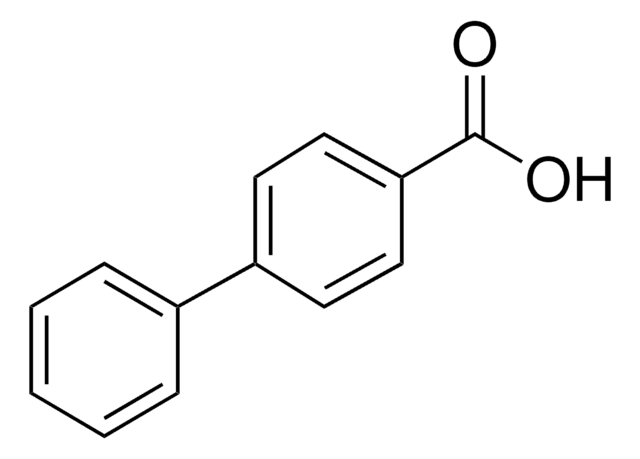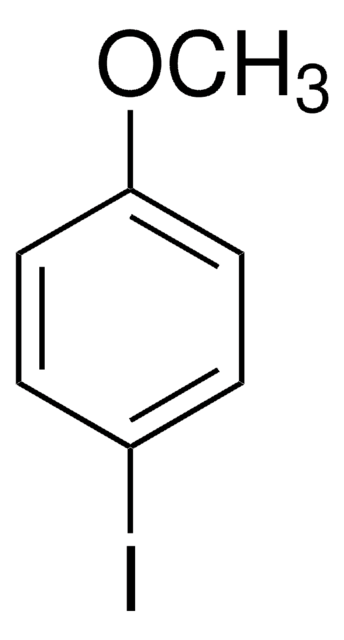추천 제품
양식
liquid
Quality Level
반응 적합성
core: palladium
reaction type: Buchwald-Hartwig Cross Coupling Reaction
reaction type: Heck Reaction
reaction type: Hiyama Coupling
reaction type: Negishi Coupling
reaction type: Sonogashira Coupling
reaction type: Stille Coupling
reaction type: Suzuki-Miyaura Coupling
reagent type: catalyst
농도
5 wt. % in 10 wt. % HCl
density
1.06 g/mL at 25 °C
SMILES string
Cl[Pd]Cl
InChI
1S/2ClH.Pd/h2*1H;/q;;+2/p-2
InChI key
PIBWKRNGBLPSSY-UHFFFAOYSA-L
일반 설명
Palladium(II) chloride is a representative salt of Pd(II) that is used as a precursor to prepare palladium catalysts for various reactions, such as Heck coupling, Suzuki coupling, Sonagashira coupling, and Buchwald-Hartwig coupling. It is also used as an oxidizing agent.
애플리케이션
Used in the synthesis of semiconducting metal-containing polymers in which the polypyrrole backbone has a conformational energy minimum and is nearly planar.
신호어
Danger
유해 및 위험 성명서
Hazard Classifications
Aquatic Acute 1 - Aquatic Chronic 1 - Eye Dam. 1 - Met. Corr. 1 - Skin Sens. 1
Storage Class Code
8B - Non-combustible corrosive hazardous materials
WGK
WGK 3
Flash Point (°F)
Not applicable
Flash Point (°C)
Not applicable
이미 열람한 고객
Mathis, M. et al.
Chemistry of Materials, 10, 3568-3568 (1998)
Annesofie Faurschou et al.
Contact dermatitis, 64(4), 185-195 (2011-03-12)
Consumers are mainly exposed to palladium from jewellery and dental restorations. Palladium contact allergy is nearly always seen together with nickel allergy, as palladium and nickel tend to cross-react. We aimed to analyse the available palladium patch test data and
Qianying Xu et al.
Analytica chimica acta, 707(1-2), 114-120 (2011-10-27)
In pH 1.7-3.5 acid medium, palladium chloride could react with adenine (A) to form a ternary complex of [PdCl(2)·A], which would self-aggregate to form uniformly dispersed nanoparticles-[PdCl(2)·A](n) with an average size of 42 nm through the squeezing effect of aqueous
Gábor Kovács et al.
Chemistry (Weinheim an der Bergstrasse, Germany), 18(18), 5612-5619 (2012-03-31)
First-principles molecular dynamics coupled with metadynamics have been used to gain a deeper insight into the reaction mechanism of the Wacker process by determining the nature of the active species. An explicit and dynamic representation of the aqueous solvent, which
Agnieszka Krogul et al.
Dalton transactions (Cambridge, England : 2003), 41(2), 658-666 (2011-11-10)
Palladium(II) complexes attract great attention due to their remarkable catalytic and biological activity. In the present study X-ray characterization, UV-Vis and Time-Dependent Density Functional Theory (TD-DFT) calculations for six PdCl(2)(XPy)(2) complexes (where: Py = pyridine; X = H, CH(3) or
자사의 과학자팀은 생명 과학, 재료 과학, 화학 합성, 크로마토그래피, 분석 및 기타 많은 영역을 포함한 모든 과학 분야에 경험이 있습니다..
고객지원팀으로 연락바랍니다.













